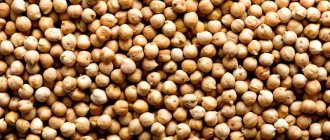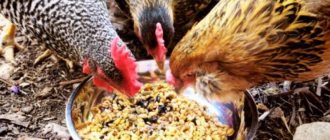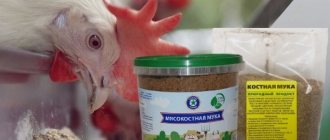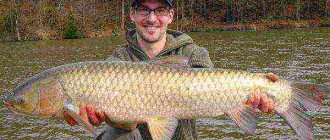2 105
no comments yet
0
Author of the article
Rasskazov Pavel
Reading time: 2 minutes
Fish contains nutrients that birds need. At the same time, such feeding is given in limited quantities: an excess of the product can cause serious harm.
How to give fish to laying hens
For laying hens, fish will be especially useful.
Seafood is traditionally rich in calcium and other macronutrients. Eating fish leads to increased egg production. The quality of the protein component of the egg is improved by increasing it in the fish diet. Important! However, too frequent consumption of fish by birds leads to a significant decrease in the amount of fluid in the body. Therefore, it is necessary to ensure that the drinking bowls in the chicken coop are always filled, preventing dehydration
The best way to use seafood food is to add a small amount to the diet once or twice a week, thoroughly mixing it with feed or grain mixtures. To add floating animals to your chickens’ feed, you don’t have to buy them; you can chop up the remains of fish you bought home that don’t end up on the table - tails, fins, etc.
Adviсe
Instead of raw or salted fish, you should give boiled seafood. After undergoing heat treatment, seafood completely gets rid of harmful microorganisms and helminths. The broth obtained during cooking can be used to prepare wet mash.
To prepare them, add unpeeled seafood to the water, wait until it boils and keep it on that heat for up to 20 minutes. This treatment guarantees softening of bones and the death of harmful microflora. The resulting product is crushed, chopped into pieces or minced in a meat grinder. Carcasses can be boiled until the bones are completely softened, in which case the fish is fed as food in its entirety.
Bone meal for chickens
An alternative option is bone meal. It is considered the most effective feed for birds and is included in most feeds. When feeding young livestock, the amount of bone meal in the diet can reach 6%. For adults and breeding individuals, the value ranges from 3-4%.
Having studied the nuances of fish consumption by chickens, each poultry farmer will be able to independently create a balanced diet. This will improve the performance of the bird by increasing egg production and accelerating weight gain.
Fish and seafood are important components of the diet of chickens when kept in a private household. They serve as a source of protein and calcium, and directly affect the egg production of birds. But when feeding these products, it is necessary to adhere to certain rules, which inexperienced poultry farmers are not always familiar with. More often than not, newcomers to chicken breeding are interested in the question of whether it is possible to feed chickens raw fish.
General feeding recommendations
Chickens are practically omnivores, so they are happy to eat any food that their owners put in their feeders. But this does not mean that birds can be fed with any food from the owner’s table.
The natural diet consists of the following products:
- Grain, plant seeds;
- Grass, greens, hay;
- Berries, vegetables, fruits;
- Small insects, worms.
When the chickens are kept closed, the menu is drawn up by the owner, and he definitely needs to know what can and cannot be fed to the bird. Laying hens can only eat some of the leftovers from the master's table.
The following products have a negative impact on poultry health:
- Cheese;
- Butter pastries;
- Sweets;
- Sausages;
- Fatty soups;
- Citrus peel;
- Oils.
Is it possible to give chickens bread ? It is this product that the owners try to treat the birds to. Bread is rich in carbohydrates, and feeding it as a source of energy is acceptable.
But chickens can only be given white, stale bread. Fresh baked goods are only good for humans, but they are harmful to poultry.
Meat, raw or boiled . There is no general consensus on the question of whether chickens can have raw meat. Some poultry farmers feed their poultry waste from cutting meat carcasses raw, while others prefer to add it to boiled mash.
In any case, you shouldn’t get too carried away with this product, since birds need it in small quantities.
The diet of chickens should be balanced and consistent with their natural needs. Only in this case will it be possible to maintain the health of the birds and achieve maximum productivity from them.
Makarov Ivan Vasilievich
Hereditary poultry farmer, owner of a poultry farm, graduated from St. Petersburg State Agrarian University with honors, author of articles in specialized publications
Representatives of the chicken order are omnivores, so they can eat almost everything that is poured into their feeders. But their natural menu consists of:
- grains, seeds;
- leaves and shoots of plants;
- fruits – vegetables, berries, fruits;
- insects and worms.
When kept in a chicken coop, the diet is selected by the breeder. Therefore, it is necessary to know exactly what can be given to animals and what cannot be given. Prohibited types of food include:
- hard cheeses;
- baking;
- sugar-containing products;
- smoked meats;
- food with a high fat content;
- leftover citrus fruits.
It is acceptable to feed birds stale white bread.
Important! If fresh baked goods enter the chicken’s body, it will cause significant harm. It is also advisable to completely exclude moldy or too raw products from the winged menu.
In small quantities, livestock can be fed meat either raw or mixed with wet porridge. Adding it to the diet is acceptable, but in extremely small quantities.
Special feed has been developed for all ages of poultry. Some of them include drugs that prevent coccidiosis and other diseases. Green grass, wet mash of vegetables and grain mixtures are added to the birds' menu. Chickens need to add crushed boiled eggs to their diet in the first week.
Daily ration of laying hens in different months of the year (per 1 bird)
The daily portion (ration) for one hen can be as follows:
Diet of laying hens in December-March
In the morning - a lukewarm mixture:
- potatoes - 80 g,
- wheat bran - 40,
- kitchen waste - 20.
At lunch or in the evening:
barley, oats or wheat (alternately - 40 g.
Diet of laying hens in April-May
In the morning:
wheat, barley or oats - 20 g.
For lunch soft food (mash):
- potatoes - 70 g,
- bran - 30 g,
- bone meal - 20 g.
In the evening - barley or wheat - 40 g.
Diet of laying hens in June-September
In the morning:
For lunch, mash:
- potatoes - 60 g,
- bran - 30 g, k
- bone meal - 20 g.
In the evening:
barley, wheat or oats - 40 g (alternately).
Diet of laying hens in October-November
In the morning: lukewarm, moist mash:
- potatoes - 60 g,
- wheat bran - 30 g.
In the evening:
barley, oats or wheat - 40 g.
Crushed eggshells, gravel, and old plaster are constantly available.
These tips on feeding laying hens were given by a famous Russian poultry farmer back in 1902. So many years have passed, but his advice is still worth listening to today.
I recommend you a new interesting video that may be useful in your hobbies!
What kind of fish can be given to chickens?
Fish is added to the diet of broiler chickens starting from the sixth day of life. In this case, the following recommendations must be observed:
- It is necessary to grind the product using a meat grinder or completely get rid of the bones by skinning it. If a bone enters the initial portions of a chicken's esophagus, it can result in piercing and subsequent death.
- Raw seafood should not be given to chickens as feed. Helminths and pathological microorganisms that live in the cavities of the fish’s body can enter and take root in the chicken’s body, leading to the development of a dangerous infection.
- It is advisable to add crushed groundbait to dry food or boiled eggs. It is added initially in small quantities, and then the dose of fish remains is gradually increased.
- After the first addition of the product, it is necessary to monitor the behavior and waste of the livestock. If lethargy appears or the color of stool changes, it is necessary to remove seafood from the diet.
Chickens need to grind fish
What can you feed chickens?
Please note that at the end of the article we provide a table of what you should not feed chickens!
Product In what form General opinions Apples Raw materials and in the form of applesauce without sugar. Apple seeds contain cyanide, but not in sufficient quantities to be harmful. Asparagus Raw or cooked. They don’t like it, but they eat it in mash. Bananas Without peel. Fruits with a high potassium content are pecked with pleasure. Beans Only well-cooked, boiled. Fresh beans and tops are eaten well. Beets In any form, give tops. Raw grate, boiled whole. Berries All types. This is the most delicious thing for chickens, take care of your plantings! Bread All types - stale pieces are best. Feed in moderation, obesity! Broccoli and cauliflower Fresh and boiled. Hang it on the wall and they'll be pecking all day long. Cabbage and Brussels sprouts Fresh and boiled. In winter, hang whole cabbages from the ceiling of the coop to give them something to play with and eat. Carrots Raw and boiled. They like carrot foliage too
Raw on a grater, but not much! Cottage cheese Super delicacy. Fat and low-fat people love Cheese. In addition to processed cheese, it is an expensive pleasure. Fatty product, but a good source of protein and calcium. Boiled chicken Eating your own kind? They may like it and it's nutritious, but it just seems...umm...wrong. Corn On the cob and canned, raw and cooked. Limited! Obesity. Crickets, bugs, worms (live) Can be bought in fishing stores (expensive). Great treat - provides protein and fun to watch the hens deal with. Cucumbers Only fresh. Cut in half, leaving only the skin. Hard boiled eggs are a good source of protein and a favorite treat. Only in cooked form! If you give them raw ones, they will start pecking at their eggs! Eggplant Raw, fresh and tops. Not everyone likes it, but they like it Fish and Seafood Only in boiled form. They also love raw fish, but we won’t risk it. Flowers Make sure they have not been treated with pesticides, only from your own flower bed. Marigolds, nasturtiums, pansies, etc. Fruits Pears, peaches, cherries, apples. They love it! Grains, cereals Any. No comments needed! Grapes Only without seeds. For chickens, cutting them in half makes them easier to swallow. Chickens play with whole grapes like football! Oatmeal It's better to steam it. They eat with pleasure. Table leftovers Any! Just not spoiled!!! We do not recommend: pickles, jams, marinades. Herbs Any leafy green that we add to dishes, fresh or dried. They like it! Yogurt Any. They eat with passion! Meat waste Not too fatty, raw and boiled, chopped. Good source of protein in moderation. Melon Seasonal buzz. Both the seeds and the pulp make good chicken treats. Oatmeal Raw cereal or leftovers from your meal. Cooked better, be careful - obesity. Pasta Cooked pasta, spaghetti, etc. A favorite treat, it's fun to watch chickens eat spaghetti. Infrequently! Peas Fresh peas and pea tendrils, leaves and flowers. They gobble it up with pleasure. Sweet pepper Fresh. Not everyone loves it! Cut pomegranates in half. The kernels are great fun. Popcorn If only without butter and salt. They'll peck quickly. Potatoes Boiled only - avoid green skins! Products with a high starch content should not be given frequently. Pumpkin Raw or cooked. Both the seeds and pulp are a nutritious treat. All kinds of raisins, but expensive. Swept away instantly. Boil rice, or cook until half cooked. Try giving pilaf - that's where the feast begins! Watermelon Rind and pulp. Peel down to the holes in the peel. Sprouts Sprouted wheat, oats. This is instead of greenery in winter. Zucchini, zucchini All varieties, raw and cooked, even squash. Not much of a treat, but some people eat it! Sunflower Seeds Sunflower seeds in the shell are good for both feeding and shelling. A good delicacy, some chickens know how to shell them, they only eat the grains! Tomatoes Raw and cooked. Not for everyone. Steamed turnip. They don't eat much.
General feeding recommendations
Chickens are practically omnivores, so they are happy to eat any food that their owners put in their feeders. But this does not mean that birds can be fed with any food from the owner’s table.
The natural diet consists of the following products:
- Grain, plant seeds;
- Grass, greens, hay;
- Berries, vegetables, fruits;
- Small insects, worms.
When the chickens are kept closed, the menu is drawn up by the owner, and he definitely needs to know what can and cannot be fed to the bird. Laying hens can only eat some of the leftovers from the master's table.
The following products have a negative impact on poultry health:
- Cheese;
- Butter pastries;
- Sweets;
- Sausages;
- Fatty soups;
- Citrus peel;
- Oils.
Is it possible to give chickens bread ? It is this product that the owners try to treat the birds to. Bread is rich in carbohydrates, and feeding it as a source of energy is acceptable.
But chickens can only be given white, stale bread. Fresh baked goods are only good for humans, but they are harmful to poultry.
ATTENTION. Brown bread should be completely excluded from the chickens’ diet. This product is highly acidic and therefore disrupts the poultry’s digestion.
A prohibited product is moldy bread. Molds can cause poultry poisoning, even death.
Meat, raw or boiled . There is no general consensus on the question of whether chickens can have raw meat. Some poultry farmers feed their poultry waste from cutting meat carcasses raw, while others prefer to add it to boiled mash.
In any case, you shouldn’t get too carried away with this product, since birds need it in small quantities.
The diet of chickens should be balanced and consistent with their natural needs. Only in this case will it be possible to maintain the health of the birds and achieve maximum productivity from them.
The value of salt in the diet of chickens
From a chemical point of view, table salt is a tandem of chlorine and sodium.
Both elements play an important role in the development and functioning of the body of mammals and birds, exhibiting the following properties:
- normalize water balance;
- regulate water-salt metabolism;
- improve liver function;
- transport oxygen through blood vessels;
- improve the conductivity of nerve impulses;
- suppress pathogenic microflora of the stomach and intestines;
- participate in the formation of bone tissue, muscle tissue, lymph cells, intercellular fluid;
- support healthy skin and feathers.
Important! If there is a lack of elements in the body, cannibalism may begin among chickens and adult specimens. In their desire to taste salty blood, the birds will begin to peck at each other.
What fish products can be given to chickens?
Fish is considered a valuable source of beneficial components for birds. However, for such feeding to be beneficial, you need to feed it to the birds correctly. As a rule, the following types have the greatest value:
In addition, fish waste can be added to bird feed. It must be emphasized that river fish is not as healthy as industrial fish. However, it is recommended to include it in the diet.
It is recommended to add the product in question to the main diet 2 times a week. It’s worth emphasizing right away that after eating fish, birds need to be provided with plenty of fluids. Because they will begin to suffer from extreme thirst. Therefore, care should be taken to ensure that the drinking bowls are full of water.
Important: If chickens are regularly fed salted or smoked fish products, there is a risk of gout. If you overfeed birds with the product in question, this will negatively affect the quality of the eggs.
Therefore, such a supplement is added to the main diet in small quantities. As experienced poultry farmers note, the optimal weight of fish food per head is 150 grams
If you overfeed birds with the product in question, this will negatively affect the quality of the eggs. Therefore, such a supplement is added to the main diet in small quantities. As experienced poultry farmers note, the optimal weight of fish food per head is 150 grams.
As for waste, feeding these products is allowed no more than once a week.
Best Alternative: Fishmeal
If you have no opportunity or desire to cook minced meat, replace it with fishmeal. This product is obtained by processing waste into flour. The semi-finished product in question will perfectly complement the poultry diet.
As a rule, waste flour comes in two types: high-fat and low-fat. A product with a small amount of fat is more valuable because it lasts longer. And that is not all. This semi-finished product is rich in the following elements:
- protein. The flour contains about 55% of this substance;
- flour is rich in amino acids;
- There are also a number of useful minerals present in the product in question.
Important: Flour is added to the diet of birds every other day. This allows you to more intensively increase weight gain and egg laying.
In view of this, fishmeal is considered the most valuable additive for chickens. Add the semi-finished product to the mash at the rate of a teaspoon per head.
Frequently asked questions
The answers to the most common questions are as follows.
Is it possible to feed chickens bread?
Bread is a product rich in carbohydrates. Carbohydrates are a source of energy. You can feed stale white bread to birds. However, no more than once a day in an amount of no more than 40% of the daily ration. A fresh loaf of bread is good only for humans, but it is not useful for the feathered inhabitant of the farmstead. Black bread has high acidity, which disrupts the normal functioning of the bird's stomach. Sweet baked goods cause fermentation in the gastrointestinal tract, so they are contraindicated for laying hens. Moldy bread for chicken feed is a prohibited product, since mold fungi can cause poisoning.
Bread
Is it possible to feed chickens cheese?
Cheese is a product made from milk. The chicken body is designed in such a way that it does not have enzymes that process lactose. Feeding poultry cheese can provoke the development of dysbacteriosis.
Is it possible to feed chickens fish?
Including fish in the diet of laying hens has a beneficial effect on the quality of the shell. However, due to inexperience, this product can harm the bird. Do not feed poultry salted fish. The product must be well boiled, as hard bones can damage the internal organs of the bird. Fish as food strengthens bones and allows you to quickly build muscle mass. But frequent feeding of this product to birds can lead to dehydration.
Is it possible to feed laying hens oats?
One of the obligatory products in the diet of chickens is grain. Oats, barley or wheat should be present in the daily diet in an amount of more than 50 g. Another product that is recommended to be fed to poultry on a regular basis is mash. It is a mixture of bran and flour. The mash contains ground oat or wheat grains.
These are the most common questions that beginner poultry farmers have. However, there is one more question that requires an answer: is it possible to feed chickens bread every day? Since bread is a nutritious and satisfying product, it is possible and necessary to feed chickens, and especially laying hens, with it in winter. It is better to do this in combination with additives of plant origin or mash with millet, grains and cereals. To do this, stale or dried bread products are soaked and then mixed with other ingredients. For chickens, in particular laying hens, who have the opportunity to roam, such additives, together with boiled potatoes and other leftover food, are also well suited at other times of the year.
Vegetables in the diet of chickens
Having a vegetable garden for a novice poultry farmer is a good help for providing birds with food. The chicken willingly pecks at the boiled potatoes. Any vegetable peelings are tasty food for chickens. You can also feed with small potatoes, which were often simply left in the garden as future fertilizer. You can feed chickens with any root crops growing on the site:
- beet,
- carrot,
- potato,
- turnip;
- radish.
To increase the egg production of a laying hen, she is specially fed carrots in the amount of 30 grams per day. The bird eats this food together with potatoes very quickly.
How much and how to properly feed bone and meat and bone meal to chickens?
Meat and bone meal is an animal feed created from meat and carcasses that cannot be used for human nutrition.
Bone meal is considered a valuable supplement, which is useful to give to both chickens and other animals on the farm - cattle, pigs. It is a source of nutrients, including protein, calcium and phosphorus. Moreover, it is the bone product that is very rich in the last two elements. This supplement, as well as meat and bone food, makes the diet balanced and more beneficial for living beings.
The dosage of meat and bone treats in the diet of chickens is 3-7% of the total volume of dry feed - this is exactly the amount that should be given to the bird so that it receives all the necessary vitamins and nutrients in abundance. At the same time, flour can be added both to mash and to concentrated feed.
The required dosage of bone meal is 0.6-0.8% of the weight of the feed.
But you should not exceed the dosage of flour - an excess of this product in chickens’ food can lead to the development of gout and amyloidosis.
Is it possible to feed laying hens bread?
Of course, no one forbids feeding chickens bread, but it must be done wisely and in the right proportions.
The stomachs of chickens are very difficult to digest fresh bread, as it becomes limp, swells and causes indigestion, and a lump can also form in the crop.
This applies primarily to a fresh white loaf from the store.
- Instead of white bread, it is allowed to give a small amount of black bread, namely stale pieces without crust and without mold.
- Dry them in advance until they become breadcrumbs.
- Before serving to the birds, the bread is soaked and mixed with sprouted grains and added to the mash.
- The chicken needs to eat them within a couple of hours, otherwise the bread will begin to sour.
True, there is such a rule that 10 days before slaughter, roosters are fed mash with white bread so that the rooster meat becomes tastier.
VIDEO INSTRUCTIONS » alt=»»>
In what cases should you refuse?
Despite the fact that the instructions for using flour indicate that there are no contraindications for use, in some cases it is worth refusing to use it:
- if the fat content is very high (more than 18%);
- if the rules for its storage are not followed;
- before slaughtering the bird, so as not to get meat with the smell and taste of fish.
Flour should be stored in a dry, dark room with good ventilation, humidity up to 75% and at an air temperature not exceeding 30 ⁰C. The shelf life in original packaging is 1 year.
What to give to laying hens?
The chicken should eat 120 g of feed per day. This portion is divided into morning and evening feeding. In the morning, an hour after waking up, the mash is prepared. Wet food stimulates egg production. The mash consists of cereals, vegetables, herbs, and mineral fillers. In the evening they give grain: a mixture of crushed and whole.
- Wheat and barley are useful cereals for birds. Rye is rich in protein, but not much is given to birds.
- Carrots are a useful vegetable. It is ground on a grater. It contains carotene, which improves reproductive function. Cabbage is rich in fiber. It contains many vitamins and mineral salts. The birds are given zucchini, pumpkin, and boiled potatoes.
- Chickens need grass. This is a source of vitamins. Green onions, dill, and parsley are added to the mixture. Nettle, dandelions, clover, and alfalfa are useful.
- Shell rock is installed in the chicken coop as mineral fillers. The food is mixed with eggshells and crushed shells. A little table salt is given, no more than 1 g per individual per day. It can provoke intoxication of the body.
- It is worth taking care of animal products. They are administered in the form of bone or meat meal, but not more than 5 g per day. Larger amounts of the additive cause aggression in chickens and can provoke pecking.
- Laying hens benefit from fish and fish oil. The fat is usually mixed with the feed. The fish is served as minced meat.
- For better grinding of food, birds need small pebbles. It is purchased from the manufacturer. The diameter of the stones is no more than 4 mm.
When creating a diet and amount of food, it is necessary to take into account the egg production of birds. If a laying hen has just started laying eggs, then a forecast is made depending on the breed of bird. On average, an egg-producing hen can produce more than 300 eggs per year. This means that in addition to the norm, 120 g, she should receive an additional 30 g of food.
- Crushed and whole grains form the basis of the diet. It is given in 100 g. Crushed pieces are 10% more. It is part of the mash.
- The chicken receives fresh greens in summer, spring and autumn, but not more than 30 g per day. Otherwise, she may develop gastrointestinal upset. In winter, give silage or grass flour: 5 g of flour.
- In autumn and spring, birds are given carrots and pumpkin. The amount of feed is 20 g/head. In summer, the individual receives all its vitamins from green grass. Carrots can be excluded from the diet. The volume of the root crop increases in winter to 40 g.
- In winter, sunflower cake or soybean pulp, 12 g, is added to food. In summer, protein supplements are introduced if egg production decreases.
- Feed yeast is useful. For 1 head 4 g.
- More bran is given up to 10 g/bird.
- Meat and bone meal should be 5 g, but it can be replaced with minced fish, no more than 15 g/bird.
- If a shell rock is not installed in the chicken coop, then an additive containing calcium is added to the mash, at least 5 g. In the summer - 7 g/bird.
- Mashboards are made using fermented milk products, 30 g.
- Jackdaws are prescribed 1 g every 10 days.
If there is no time to prepare a diet for poultry, then purchase a combined feed. For laying hens, PC1, PC2 are shown. It is given in dry form or wet food is prepared using skim milk. If necessary, vitamin fillers “for laying hens” are added to the food. Pebbles are a must-have product for chickens: they are their “teeth.” Compound feed is administered at the same rate as other food. For chickens producing eggs and meat, the amount of feed is increased by 30%.
Feed for chickens to increase egg production and feed for broilers
Different types of feed have different effects on the bird’s body. Some grains are more conducive to the deposition of meat, while others, on the contrary, promote the formation of fat. The former are more suitable food in warm weather, the latter - in cold weather.
Without a doubt, millet, oats and barley are more suitable food for summer, and wheat, corn, buckwheat and triticale - for winter.
Therefore, the first types of food are given to chickens so that the birds lay eggs better, and the last ones - for fattening.
Crushed raw bones are also considered animal feed. They greatly influence the laying of eggs and help maintain vigor and health of birds.
Fish, like meat, helps to enhance egg laying; it is also useful during molting. However, fish imparts an unpleasant odor to eggs and poultry meat. Therefore, it can only be given raw to breeding birds. When giving fish to hens or chickens, it is necessary to clean it from the bones. To eliminate the smell of fish, it is better to give it boiled. In general, it is better to fry and grind into powder and include in the mash. It is also known that the same type of food, but in different forms, affects birds differently.
For example, oats, barley and millet, given in the form of solid grains, promote the deposition of meat and the laying of eggs , but the same food, given in the form of flour, contributes to the obesity of poultry.
Chickens that feed primarily on greens and animal food lay eggs that are not capable of long-term storage. So, in the summer, peasant chickens, eating only what God sends, lay so-called “grass” eggs, which have an unpleasant taste and are poorly stored.
Soft food, as it is quickly digested, is given in the morning, hard food in the evening. This rule should be observed especially in winter, when the days are short and the nights are long. Feeding too often and feeding in abundance cannot be called correct. In both cases, chickens easily become obese and become squeamish, choosing only tasty grains and neglecting the rest.
It is best to feed the bird twice a day in winter: morning and evening.
Give soft and warm food in the morning, and dry grain in the evening. In the intervals between morning and evening feedings, the bird can peck cabbage, dry nettles, etc., hung on the walls or suspended from the ceiling of the chicken coop so that the laying hens can reach it.
Is it possible to feed raw fish to chickens?
For laying hens, fish is a valuable product enriched with vitamins, minerals and trace elements. You need to know what breed and in what form should be fed to chickens, and what should be discarded.
River fish is beneficial for poultry, but it is often contaminated with helminths, since many pathogenic organisms develop in fresh water. When parasites enter the digestive tract of a bird, they can quickly develop and infect the entire flock.
Inhabitants of salty sea water are much less likely to be affected by coelenterates, so sea fish are often fed to chickens (sprat, blue whiting, pollock, herring).
Salted fish
This type of fish product is one of the most undesirable for poultry, since salt should enter its body in strictly limited quantities - no more than 0.3% of the daily feed ration.
Salted fish can be given to chickens only after soaking it for a long time. Most often, poultry farmers do not risk using such a product for feeding, so as not to exceed the salt intake rate.
Raw fish
The rules for feeding raw fish depend on the age and characteristics of the bird. Many farmers and homestead owners do not allow laying hens to be fed this product because they believe that the eggs acquire an unpleasant taste and smell.
When feeding raw poultry, it is worth considering the following rules:
- commercial sea fish are added to chicken feed in the form of minced meat;
- fresh river fish must be cooked before feeding;
- Chickens are not fed raw fish.
Boiled
Most often, poultry farmers use boiled fish - a completely safe product if it is brought to the state of softened bones. For this purpose, it is cooked in boiling water for at least 20 minutes. The decoction can be used for wet mash. Next, it is ground in a meat grinder or, divided into pieces, given to the bird. Consumption rates are 70 g per chicken per week.
Fishmeal
An alternative to a fresh product is flour, which is obtained by processing waste from fishing enterprises. Low-fat (2-3%), which is well stored, is valued higher. The advantages of the product include:
- high content of protein, minerals;
- calcium affects the quality of the shell and the shelf life of eggs;
- protein promotes the rapid growth of the broilers’ skeletal system and their muscle mass;
- the supplement is easy to store and use;
- The use of bone meal reduces the cost of raising poultry and obtaining eggs.
Do birds eat fish?
Chickens eat fish with great pleasure. This product is a source of a number of useful elements, such as:
- amino acid;
- fats;
- protein;
- calcium;
- phosphorus.
Important: Any sea, river or store-bought fish is suitable as complementary food. Moreover, chickens can eat this poultry delicacy both raw and boiled.
By regularly receiving these components, the chicken builds muscle mass more intensively and increases the number of eggs laid. In addition, laying hens have stronger bones.











